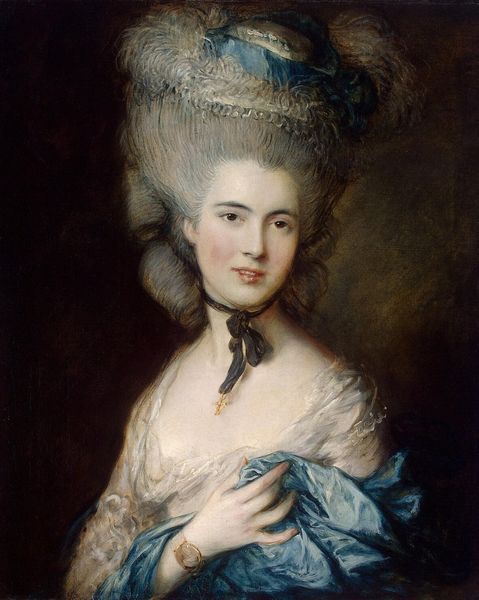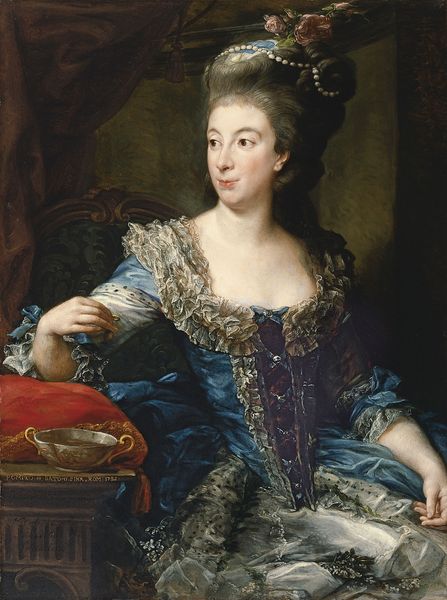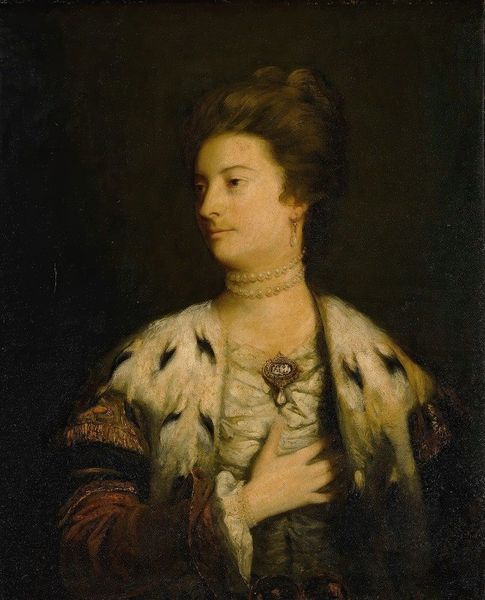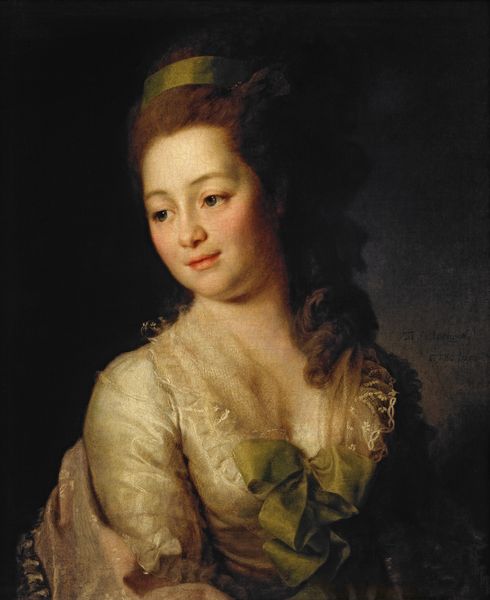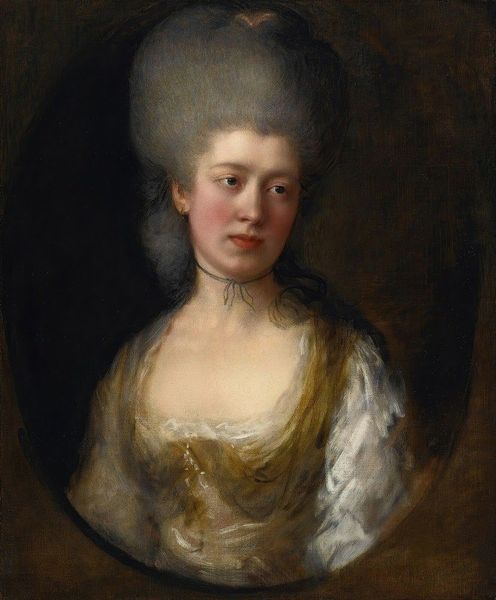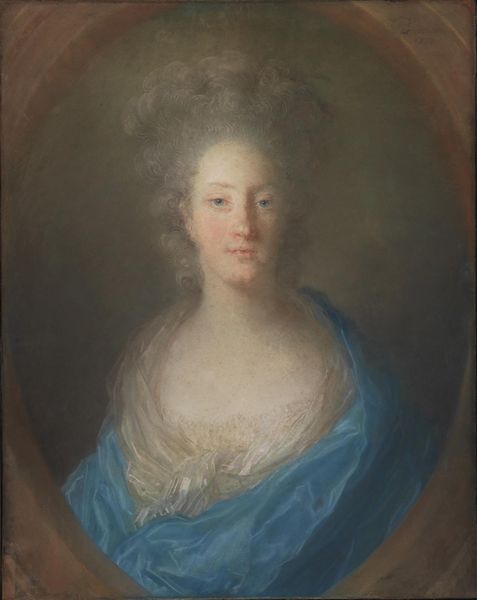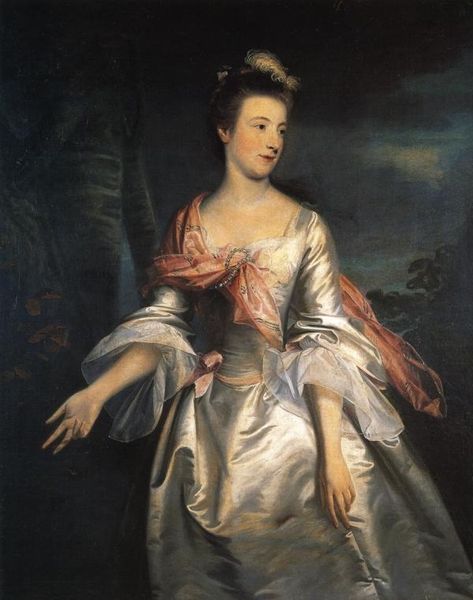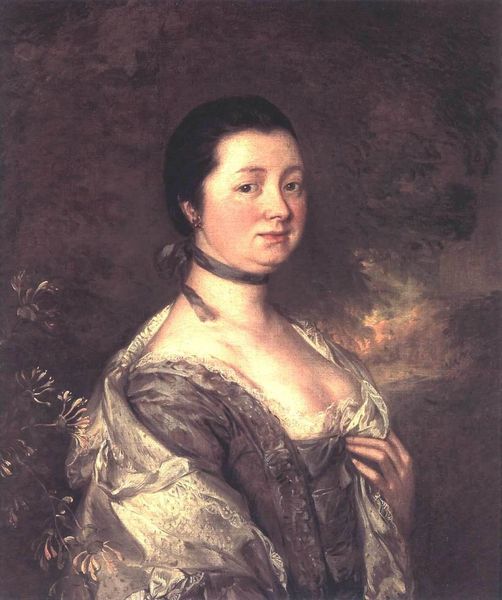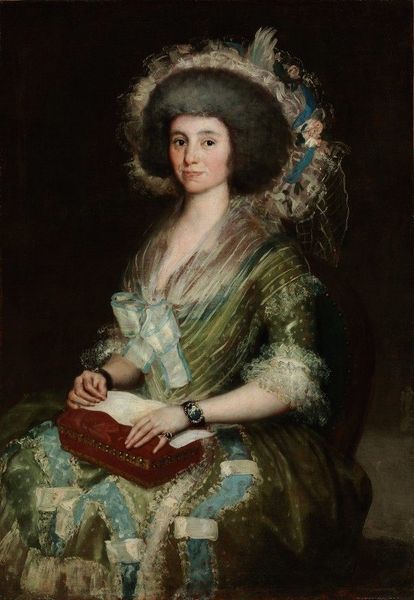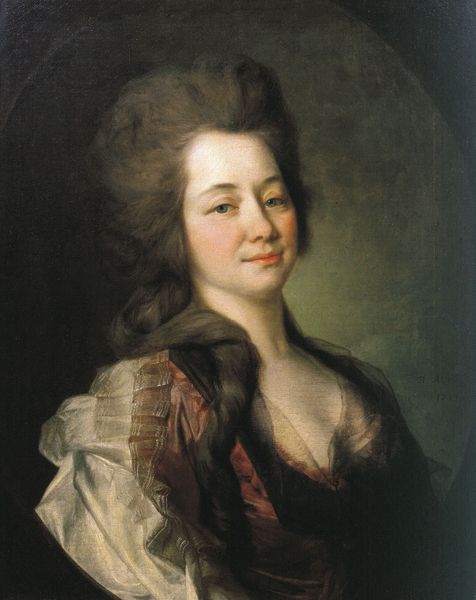
Dimensions: 76 x 64.5 cm
Copyright: Public domain
Curator: Thomas Gainsborough's 1777 "Portrait of Mary Gainsborough" captures his daughter in a manner that is both intimate and representative of its Rococo era. The painting itself is an oil on canvas. Editor: My immediate response is a feeling of restrained melancholy, almost muted in tone, but still radiant through Gainsborough's skillful application of paint. The dark background sets off her luminous complexion. Curator: I agree. Placing this work in its time, we can consider it as a reflection on the societal constraints placed upon women in the 18th century, where personal expression was mediated by class and gender expectations. The rose on her chest seems like a carefully chosen symbol, a hint of thwarted passion, maybe? Editor: Perhaps, but I'm equally fascinated by the physical presence of the materials: the layered strokes of the oil paint that create the silk-like texture of her dress and the feathery lightness of her hat. Notice how those material details underscore the labor and craftsmanship involved in representing aristocratic life. It makes one consider the work required to maintain such an image. Curator: Indeed. The portrait performs the societal function of celebrating status, but it’s also important to acknowledge Mary's own identity here. The slight upturn of her lips suggests a hidden defiance or intelligence, don't you think? A commentary on her role in a patriarchal society that valued women primarily for their beauty and marital prospects. Editor: And the application of the pigments, creating form and depth, brings its own social narrative. Consider how lead-based paints affected workers, how these portraits functioned within specific economies of extraction and trade. It wasn’t just about appearances. Curator: Exactly, viewing Gainsborough's work through our modern intersectional lens allows us to acknowledge not only Mary Gainsborough’s possible inner life, but also how the creation of this piece contributed to larger societal narratives. Editor: Precisely. I see a story etched into the canvas, a visual archive that is more than simply an image of beauty, but one steeped in socio-economic relationships. Curator: Yes. It pushes us to ponder questions about the dynamics between artist, subject, and the art object itself. Editor: Indeed, making this work more than meets the eye and encourages continued thought and reinterpretation.
Comments
No comments
Be the first to comment and join the conversation on the ultimate creative platform.
